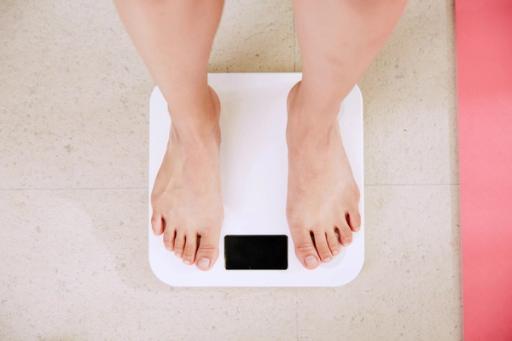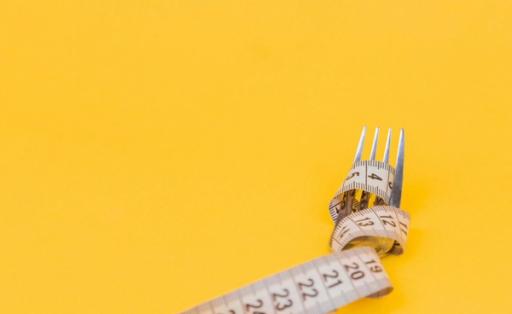
Gaining muscle can be a frustrating process. You may feel like you’re doing everything right—lifting weights several times weekly, taking your protein shakes, and maybe even working with a trainer to fine-tune your routine. But if you’re not seeing the desired results, it might be time to take a step back and evaluate your nutrition. How many calories should I eat to gain muscle? This is a common question for anyone looking to build muscle and strength, and for good reason. Your diet—specifically, calorie intake—can make or break your muscle-building goals. This article will help you find the exact calorie intake you need to gain muscle efficiently, build strength, and achieve noticeable results without unnecessary fat gain. We will also touch upon, how are calories measured?
To streamline your search, Cal AI’s calorie tracker can help you pinpoint your unique muscle-building calorie intake so you can focus on the fun stuff: working out and building muscle!

Weight gain is primarily driven by eating more calories than your body burns consistently. But it takes energy to store energy. In other words, your body burns calories digesting food and storing this food as either body fat or muscle.
In contrast, losing stored body fat/muscle releases energy for use. This is why excess calories are needed to gain weight, and cutting calories is a practical approach to losing weight.
With any weight gain, the goal is typically to increase lean mass while limiting gains in body fat. This is because muscle provides numerous health benefits, whereas excess fat is just energy reserves, and high amounts of body fat are associated with less desirable health outcomes.
Muscles are what help us stay strong and healthy as we age. It is closely linked to recovery from injury and illness and may even play a role in preventing obesity and diabetes. Strength training has been linked to stronger bones.
These positive effects are partly because muscle is more metabolic than fat. One pound of muscle burns 4.5 to 7 calories daily, whereas one pound of fat may only burn a few calories. Your lean tissue makes up approximately 10 to 20% of your daily calorie needs compared to only 4 to 5% for body fat. Muscles also store key nutrients, such as glycogen (aka carbs), water, and amino acids. Thus, having more lean tissue means you process and store your calories more efficiently, and your higher weight and output allow you to eat more calories in general. For many, adding muscle means eating more food and looking more fit, a highly desirable result. More lean muscle mass can also make it easier to maintain fat loss.
So, how can you ensure you gain more muscle than fat? Ultimately, it comes down to nutrition and training.
To gain muscle, you must consume more calories than you burn. Your daily burn depends on many factors, including weight, age, gender, and activity level. Use an online calculator, like the one found at CaloriesperHour.com, to determine your daily burn and add between 250 and 500 calories daily.
According to Dr. Melina Jampolis of CNN, your body can build only a half pound of muscle per week, so adding more than this amount of calories will likely result in gaining fat and muscle.
Another way to figure out how many calories you should consume involves simply multiplying your body weight by 18 to 20 pounds, according to fitness expert Anthony Ellis of Iron Magazine. According to this formula, a 180-lb. man needs between 3,240 and 3,600 calories daily. A 130-lb. woman should eat between 2,340 and 2,600 calories.
Adding calories from junk food will not result in muscle gain. Eat adequate protein, which provides essential amino acids that help in muscle growth--"Muscle and Fitness Magazine," in a 2008 article, recommends at least 1 to 1.5 g of protein per pound of body weight daily. Choose high-quality sources like:
Ensure you still eat adequate carbohydrates to give you the energy to perform your workouts; stick to fresh fruits, vegetables, and whole grains. Consume healthy monounsaturated fats in the form of flax seeds, plant oils, nuts, salmon, and avocado to support hormone production and vitamin absorption.
When you need to take in a lot of calories during the day, you might prefer to eat often rather than gorge on two or three large meals. To fit in all your calories, divide your daily needs by five or six and strive to eat that amount every three to four hours. For example, if you are the 180-lb. man needing 3,600 calories daily, eat six meals, each containing 600 calories.
Try timing one of these meals around your workout, as consuming lean protein before, during, and within an hour after a lifting session can help enhance muscle gain. Protein shakes and supplement bars work well for these occasions.
If you gain fat quickly, start with modest calorie additions to your daily intake. Even if you try changing your body composition to carry less fat, you still need extra calories to build muscle. If you consistently burn more than you eat, your body will not regenerate muscle efficiently.
If your calorie intake is too low, you may start to use your muscles for fuel and derail your muscle-building goals.

Building muscle has two sides: One is a workout program targeting muscle growth or hypertrophy. The other side is nutrition, particularly calorie intake. Most people fall short in this area. Afraid of gaining fat or simply oblivious, those focused on packing on size don’t eat enough.
You can’t build muscle without calories. Let’s look at one of the easiest and most reliable ways to calculate your calories for muscle building.
To understand calorie intake for muscle gain, you must know about total daily energy expenditure or TDEE. This number represents the total calories you burn in one day. The more active you are, the higher your TDEE will be. To gain muscle, you must eat more calories than you burn.
You can easily calculate your TDEE using an online calculator. You can also determine your TDEE by hand using your body weight, activity level, and basal metabolic rate (BMR). BMR is the number of calories your body needs to function at rest without any physical activity.
To calculate your TDEE, determine your BMR and multiply that number by an activity factor to account for your exercise and daily movement.
Calculating your BMR is simple. First, gather information about yourself: gender, weight, height, and age. Next, use the following formulas to calculate your BMR.
For Females
BMR = 655.1 + (4.35 × weight in pounds) + (4.7 × height in inches) - (4.7 × age in years)
For Males
BMR = 66 + (6.2 × weight in pounds) + (12.7 × height in inches) – (6.76 × age in years)
Let’s look at an example:
TOM IS 21 YEARS OLD. HE IS 5’ 8” (68 INCHES) AND WEIGHS 140 POUNDS.
Using the formula for males, we get
66 + (6.2 X 140) + (12.7 x 68) – (6.76 x 21)
= 66 + (868) + (863.6) – (141.96)
= 1,655.64 (round to the nearest whole number)
= 1,656 Tom’s BMR (basal metabolic rate) is 1,656.
That means Tom should eat 1,656 calories daily to maintain his current weight without physical activity.
Next, calculate your total daily energy expenditure (TDEE). To do this, think about how active you are.
Be honest with yourself. Now, find your current activity level based on the chart below:
Activity Level 1: Little or no exercise
TDEE = 1.2 x BMR
Activity Level 2: Light exercise (1 to 3 days per week)
TDEE = 1.375 x BMR
Activity Level 3: Moderate exercise (3 to 5 days per week)
TDEE = 1.55 x BMR
Activity Level 4: Heavy exercise (6 to 7 days per week)
TDEE = 1.725 x BMR
Activity Level 5: Intense exercise (Daily)
TDEE = 1.9 x BMR What is your activity level?
A quick reminder: Your activity level should be based on how active you are, not how active you’d like to be. Now multiply your activity level number by your basal metabolic rate. That’s it; pretty simple, right? Using the example from above: Tom has a basal metabolic rate of 1,656. Tom goes to the gym three days per week. He has a desk job but goes for a 20-minute jog during his lunch break. Tom would fall under Activity Level 3.
Tom’s TDEE =1.55 x BMR (basal metabolic rate) = 1.55 x 1,656 = 2,574.8 (round to the nearest whole number) = 2,575 calories At his current activity level, if Tom wanted to maintain his weight, he would need to eat about 2,575 calories daily. But Tom doesn’t want to stay at his current weight. He wants to build muscle just like you do. Here’s how to adjust your caloric needs to reflect the muscle building goal.
You’re here to pack on size, so you’ll need to increase the number of calories you eat each day by 15% more than your TDEE: TDEE x 15% TDEE x .15 = Calories for muscle mass Let’s look at Tom’s example again: To maintain his current weight, Tom must eat about 2,575 calories daily. Tom wants to build muscle, so he must bump his calories by 15%.
Here’s how to determine Tom’s new caloric needs:
2,575+ 15% = 2,575 + 386 = 2,961
Tom’s new daily caloric intake for building muscle is about 2,961 calories daily. Truth be told, that number is significant. For newcomers, it can be intimidating. What’s more, you don’t want to only focus on reaching that number of calories by any means necessary. This sets the stage for consuming high-calorie, empty-nutrient junk food to meet your number.
To reach your muscle-building goal, you should eat healthy macronutrients, emphasizing protein. Let’s break down your caloric intake into macronutrients to make it easier to understand and accomplish daily.
First, what are macronutrients? Pick up any nutrition label and see fat, carbohydrates, and protein. These three are the macronutrients you’ll be focusing on.
By aiming to eat a certain amount of macronutrients at each meal instead of reaching one big number by the end of the day, you can space out your meals and prepare healthy recipes ahead of time based on your macronutrients.
There are three primary body types that the majority of people will fall under. Each body type is more or less sensitive to macronutrients. This is why some people do great on a low-carb diet; others can’t last a week. Take a look at the three body types below. Which one most accurately describes you?
Endomorphs have a thicker build and are often called thick, short, and stocky. An endomorph body type has a naturally slower metabolism, making it easy for them to get bigger or bulk, but they struggle when cutting season comes around. Endomorphs typically focus on fat loss. A quick tip: If you’re an endomorph body type, have you tried using a waist trimmer belt to lean out and get cut?
On the opposite side of the spectrum, an ectomorph body type is lean, skinny, or lanky. They are often called hard gainers. They have a naturally high metabolic rate, allowing them to eat all day and not gain a pound. They can quickly lose weight but always have trouble bulking up or putting on weight. Ectomorphs often focus on getting more significant.
The mesomorph body type is the one we all want to have. They have a naturally lean and muscular physique, often called athletic or sporty. They have a higher metabolic rate that allows them to stay lean, but not so high that it doesn’t allow them to pack on muscle size.
They can gain muscle as quickly as they can burn fat. Some mesomorphs have weak points, such as small calves, but this will differ from person to person. Which body type best describes you? Once you identify with one of the three, we can move to the last step to calculate how many macronutrients you’ll need per meal.
Remember how we said each body type responds better or worse to each macronutrient? Based on this, we can suggest a percentage of macronutrients based on your total caloric intake. (Still, have that number nearby?) Locate your body type below:
Endomorph Body Type
Ectomorph Body Type
Mesomorph Body Type
We can break down your total caloric intake into the total number of each macronutrient. Let’s go back to Tom’s example to help illustrate this point: Tom has an endomorph body type. An endomorph diet should be based on 25% carbohydrates, 40% protein, and 35% fat. His total caloric intake is 2,961.
Tom’s Carbohydrates
2,961 x .25 (25%)
= 740.25
740.25 / 4 (There are 4 calories in one gram of carbohydrates)
= 185.06 (round to the nearest number)
= 185
Tom should be eating 185 grams of carbohydrates per day.
Tom’s Protein
2,961 x .40 (40%)
= 1,184.4
1,184.4 / 4 (There are 4 calories in one gram of protein)
= 296.1 (round to the nearest number) = 296
Tom should be eating 296 grams of protein per day.
Tom’s Fats
2,961 x .35 (35%)
= 1,036.35
1,036.35 / 9 (There are 9 calories in one gram of fat)
= 115.15 (round to the nearest number)
= 115
Tom should be eating 115 grams of fat per day. How many times per day do you eat? Four meals? Six meals? Divide each of the macronutrients by the number of times you eat per day. This number is how many of each macronutrient you should eat with every meal. Back to Tom. Tom eats five meals per day.
Total grams of carbohydrates: 185
185 / 5
= 37 grams of carbohydrates with each meal
Total grams of protein: 296
296 / 5
= 59 grams of protein with each meal
Total grams of fat: 115
115 / 5
= 23 grams of fat with each meal

When gaining weight, especially for muscle growth, hitting a plateau or stall in progress is shared. This is entirely normal. Before stressing out, let’s look at some of the most common reasons for this. The first step is identifying the cause. Next, we can get you out of the slump and progress again.
Most people underestimate their calorie intake. Research shows that about 60% of participants in one study underestimated their intake by 1,000 calories per day. When you’re trying to gain weight, especially muscle, this can stall your progress. Another common factor is overestimating activity levels.
It’s easy to think you’re working harder than you are, especially if you have an active job or have recently started a new training program. Inconsistent eating habits can also wreak havoc on your ability to gain weight. To make matters worse, they can also throw off your metabolism, making it even harder to gain weight. To overcome a stall in muscle gains, first identify the cause. Then, implement practical strategies to fix the issue and get you back on track.
Most calorie calculators estimate how many calories you need to build muscle. Nevertheless, it isn’t perfect, and neither are we. Even if you’re tracking your calories with an app, and even if that app uses a verified food database (as MacroFactor does), there’s still a margin of error. That’s why we need to be adaptive.
As you gain weight, you’ll burn more calories. There’s a straightforward reason: you must carry that extra weight around. Plus, muscle is metabolically active, burning around six calories daily at rest (study). All told a pound of muscle burns around 12 calories per day. That’s an extra 60 calories for every 5 pounds you gain.
There’s another factor to consider, too. As you get used to eating more calories, your metabolism might start spending those calories more freely, especially if you have a body type that resists fat gain. This can further increase your calorie needs. As you build muscle, you’ll need to increase your calorie intake gradually.
Weigh yourself at least once per week. The way I do it, and what we recommend in your bulking programs, is to have an official weigh-in at the end of every week. For example, right after waking up every Sunday morning, you’d record your weight on the scale. Your weight will fluctuate. It won’t be perfect. But weighing yourself under similar circumstances every week does a pretty good job of removing confounding factors.
I recommend weighing yourself once per week because it gives you a clear goal to aim for. During the week, you’re working towards your weigh-in. It’s motivationally powerful. Another approach is to weigh yourself every day and track your average weight. Keeping a rolling average gives you a more precise idea of how your weight changes.
Calories are a measurement of energy. Our bodies need energy to function and complete daily tasks. The food we eat contains different amounts of calories, and these calories fuel our bodies.
For example, if you consume 200 calories worth of a donut, your body breaks down the sugars and fats in the donut and uses them for energy. If you eat more food than your body needs, it will store the excess energy as fat. If you reduce calories and lose weight, your body will use stored fat to fuel its functions.
Every food affects the body differently, and some types of calories (like those from whole foods) can help with weight loss, while others (like those from processed foods) can hinder progress.